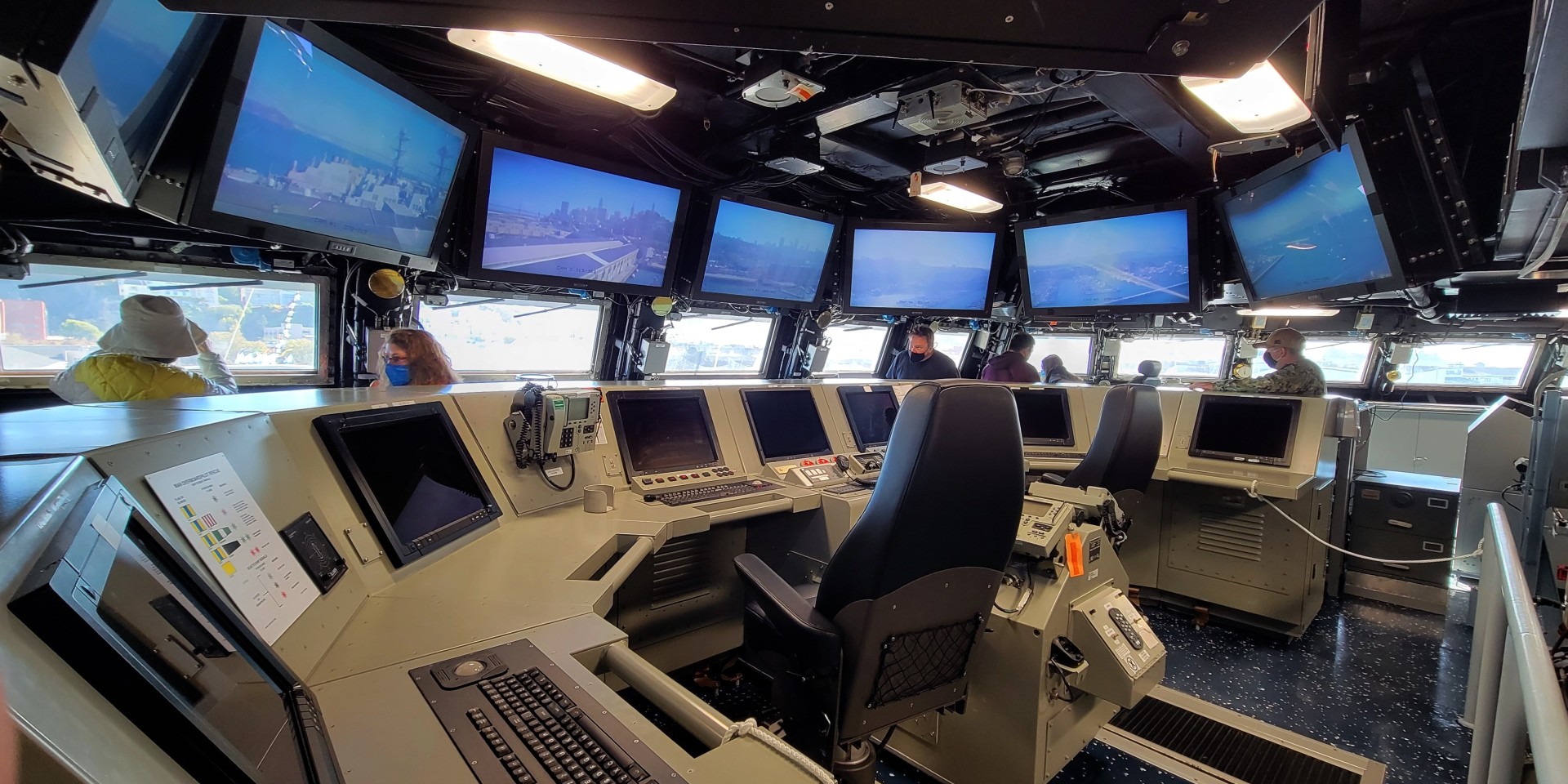Metal Fabrication Tips for Naval Command Center Consoles

A tactical command center console on a U.S. Navy ship, often called the Combat Information Center (CIC), is the hub of operations. These consoles house critical electronics, cables, display screens, sensors, and communication devices to aid with everything from navigation to missile defense.
Depending on the class of ship, there may be clusters of consoles in a CIC to support different functions, such as surface, electronic, or anti aircraft warfare, each manned with their own specialized experts who monitor and execute mission-critical activities.
Command Console Cabinets: The Bones Behind the Brains
The electronics are the star of the show, yet the console cabinets, whether they’re part of the CIC or the ship’s Integrated Bridge System (IBS), play a major supporting role, ensuring that all those components remain secure, stable, and protected. Naval ships can encounter extreme weather events while at sea, in addition to potentially hostile environments from external threats and combat.
Even though the command center consoles are often kept in a protected area of a ship, they can still be subjected to shock, vibration, and other potentially hazardous conditions. Prior to deployment, a ship must go through a series of intense testing to ensure each component performs as intended. Some of these tests may include the detonation of nearby explosives to simulate warfare. The cabinetry that houses the electronic equipment needs to withstand whatever nature or the enemy throws at it to protect the critical equipment inside.
Metal Fabrication of Military Control Room Consoles
IBS and Command center consoles are typically fabricated out of aluminum due to its lighter weight. The consoles typically consist of several individual cabinets that are assembled on the ship. Once the modular units are delivered to the bridge, they need to fit perfectly, aligning with adjacent fixtures, electrical access holes, bolts, and other components. They also need to align with all the control panels, screens, and systems in addition to providing proper venting and cooling.
As you can imagine, the engineering and drawings need to be designed to exacting specifications. Drawings need to have detailed dimensional requirements, accurate weld callouts, and weld types for each joint. Once in production, the fabrication, including machining, forming, welding, and assembly often need to be within tolerances as tight at +-.010-inches.
Because they’re crafted out of aluminum, achieving such tight tolerances is a challenge and requires highly skilled welders. When subjected to the heat of TIG welding, aluminum becomes malleable and prone to warpage. To maintain precision, custom jigs and fixtures must be designed to hold structures in position to ensure they maintain tolerances.
READ MORE: Challenges of Aluminum vs. Stainless Steel Welding
Painting of the consoles also needs to be extremely precise to ensure there is no overspray or inconsistent paint thickness which could interfere with assembly or installation of components, bolts, gaskets, and more. The same care taken to ensure accurate drawings for weld joints needs to be taken with defense industry painting requirements. Industrial painters will use masking and specialty techniques to ensure compliance.
When it comes time for installation on the ship, the integrated modular units of a console assembly need to fit together as intended. Onsite assemblers should not have to modify or adjust the cabinets to align with other components due to poor workmanship from the metal fabricator. Fox Valley Metal-Tech is proud to say that our workmanship, quality and adherence to customer specifications allow our customers save significant time on installation, helping to realize intended project timelines and cost savings.
Fox Valley Metal-Tech has worked with some of the top U.S. defense contractors for years, fabricating complex, high-tolerance cabinets that house highly sensitive electronics on aircraft carriers, war ships, and other naval vessels. These projects include the command console for the Integrated Bridge System on the U.S. Navy’s DDG-1002 Zumwalt-class destroyer. Fox Valley Metal-Tech also delivered more than 100 large, complex electrical enclosures that house the electromagnetic aircraft launching system (EMALS) and advanced arresting gear (AAG) systems on each of the Gerald R. Ford Class Nuclear Aircraft Carriers.
Case Study: Gerald R. Ford-Class Aircraft Carrier Electrical Enclosures
Product reliability is paramount for defense contractors, and so is vendor reliability. For those looking to partner with an approved defense metal fabrication company that invests in its infrastructure and NAVSEA-certified welding team, contact the experts at Fox Valley Metal-Tech. Our team can walk you through the RFP process to help ensure an accurate bid and timelines.
